With Gil Dekel, PhD.
Shofar paper – template and instructions:
The children love this Shofar, but remember: once they have made it they will not stop blowing it – and the party will get a bit noisy. So maybe consider to do this activity last.
Click here for PDF template. You can use hooters, but Kazoos will also work well. You can also use paper straw.

(Photo by Gil Dekel)
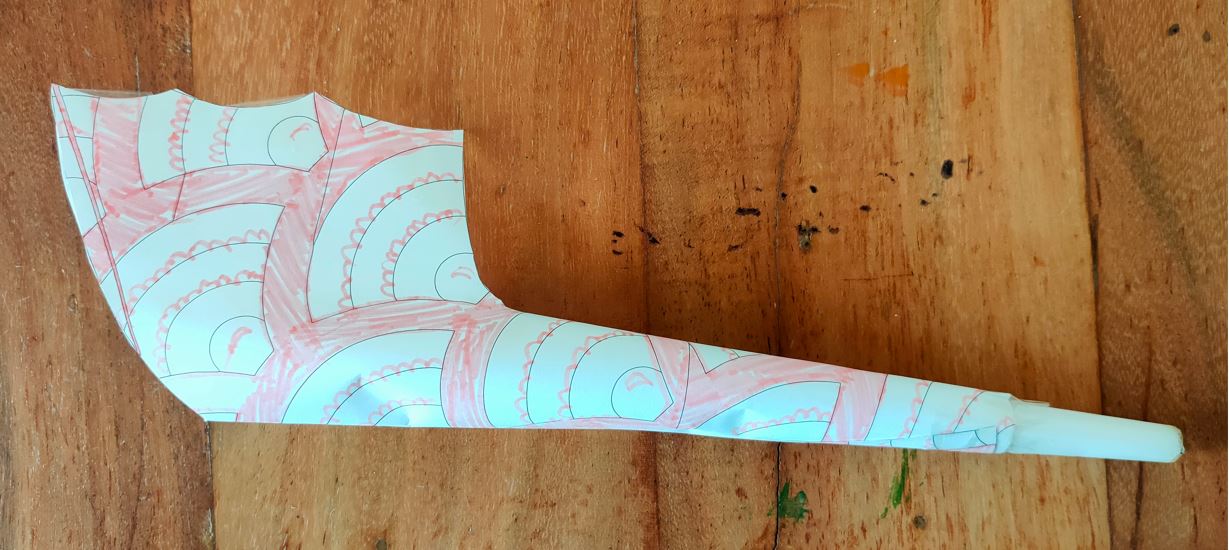
Rosh HaShana Shofar (photo: Gil Dekel).
Shofar instructions (click to open):
1. Print template (from previous page) on a card, and cut out. A card of 100grams or more will be best.
2. Decorate top area – red area.
3. Stick wavy area – . blue area A to B.
4. Roll the bottom area – C – into a tube. Attach a hotter, Kazoo, or a straw.
Hand cards
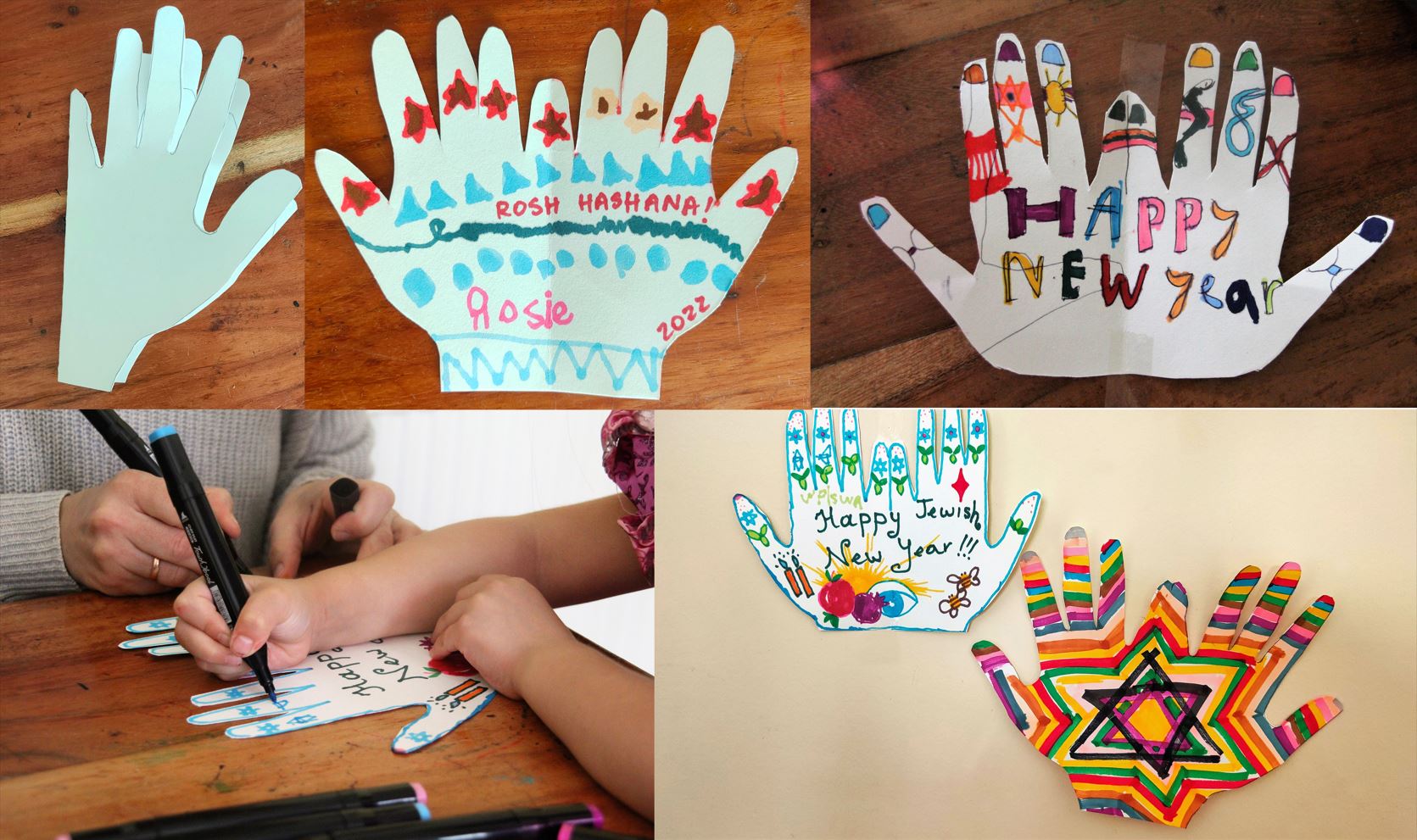
Make Rosh HaShana Hand Card.
Flap the Bees to the Flower – A Game
Click to download PDF template. Print on A4 paper. Place the bees and flowers on the floor. The children need to use a card to ‘flap’ the bees along the floor to the flowers. You can also blow, instead of flapping.
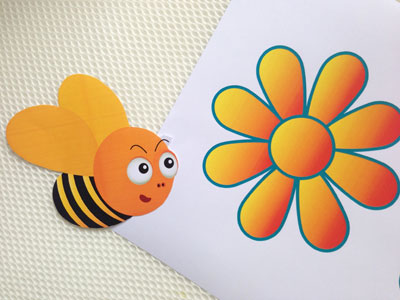

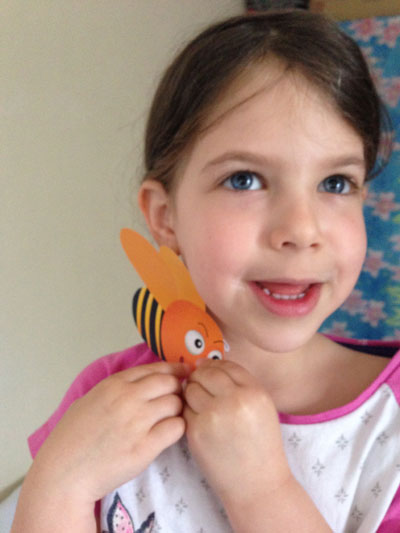
Help the bee reach the flower. Rosh HaShana game. (Photos: Gil Dekel).
Apple chest (box):
Cut the bottom of 2 plastic bottles, and place one inside the other. Use hot glue to attach leaves (cut from fabric, or paper). Pad with green paper, and add sweets. Children can also make a wish.
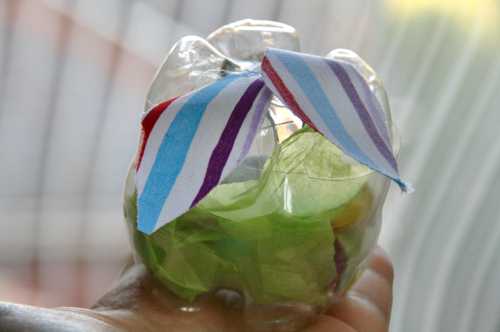
Apple chest (box) made of plastic bottles (photo: Gil Dekel)

Make gift chest box from bottles, for Rosh HaShana (photo: Gil Dekel)
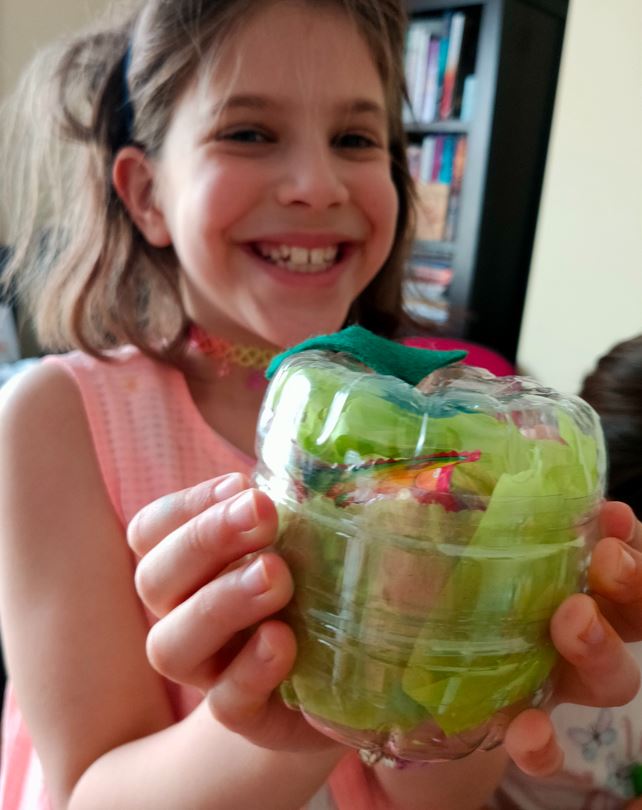
Apple Chest Box gift Rosh HaShana (photo: Gil Dekel)
Cards – sliced apple for stamping cards:

Make cards using sliced apple as a stamp (photo: Gil Dekel).
The Wishing Cake:
Have the children choose a wish for the New Year, and write it on a cake using cake decoration pen. Each child to have a slice of their wish/cake… Best to use large, flat cake, so it is easy for children to write. The cake below was bought from asda at £10.

The Wishing Cake – write a wish on a cake (photo: Gil Dekel).
Wishing Tree:
Create room-size tree. Each family member writes a wish, or a resolution for the new year, on a leaf…
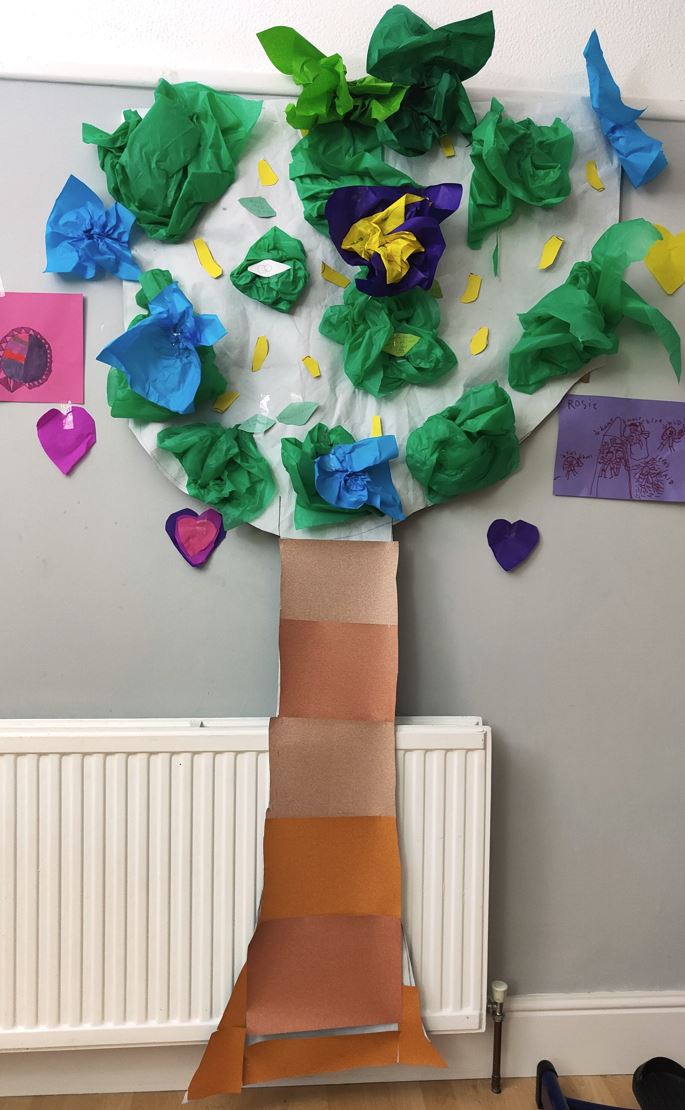
Tree for Rosh HaShana…
Children story for Rosh HaShana.
By Gil Dekel.
Rosh HaShana is the Jewish new year. “Rosh” means head, which also means new. “HaShana” means a year. So it means: the New Year.
What happens in the New Year? Something very special… All the angels are standing at the sides of the sky, and they open up the sky wide. And from the centre of the sky God is looking down at us.
The New Year is the day where we tell God all the things we did not like last year, so that He can put them away. We then tell Him all the things we want to happen the next year, and He writes it down in a special little book
However, the angels always need help opening the skies. They can’t do it by themselves. To help them we do this small thing which is called “Shofar”. It is like a trumpet, but made of a horn of a ram. And when we blow it in Rosh HaShana it makes a lot of noise. The noise gives the angels a lot of energy to open the gates of heaven.
Symbolism
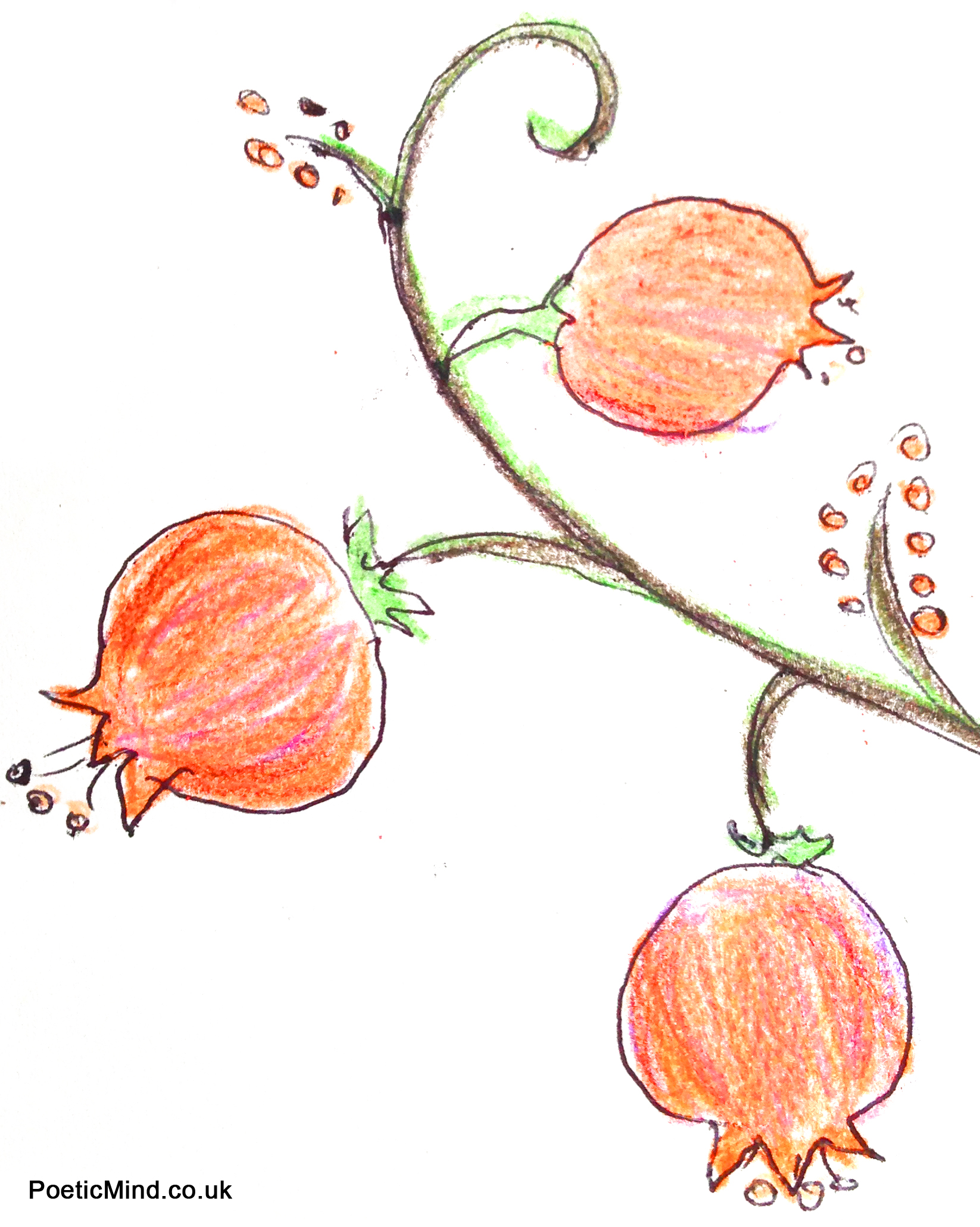
A pomegranate’s abundant seeds symbolises creation, abundance, and a hope that our lives will be fruitful with good deeds.
(Illustration by Natalie and Gil Dekel.)
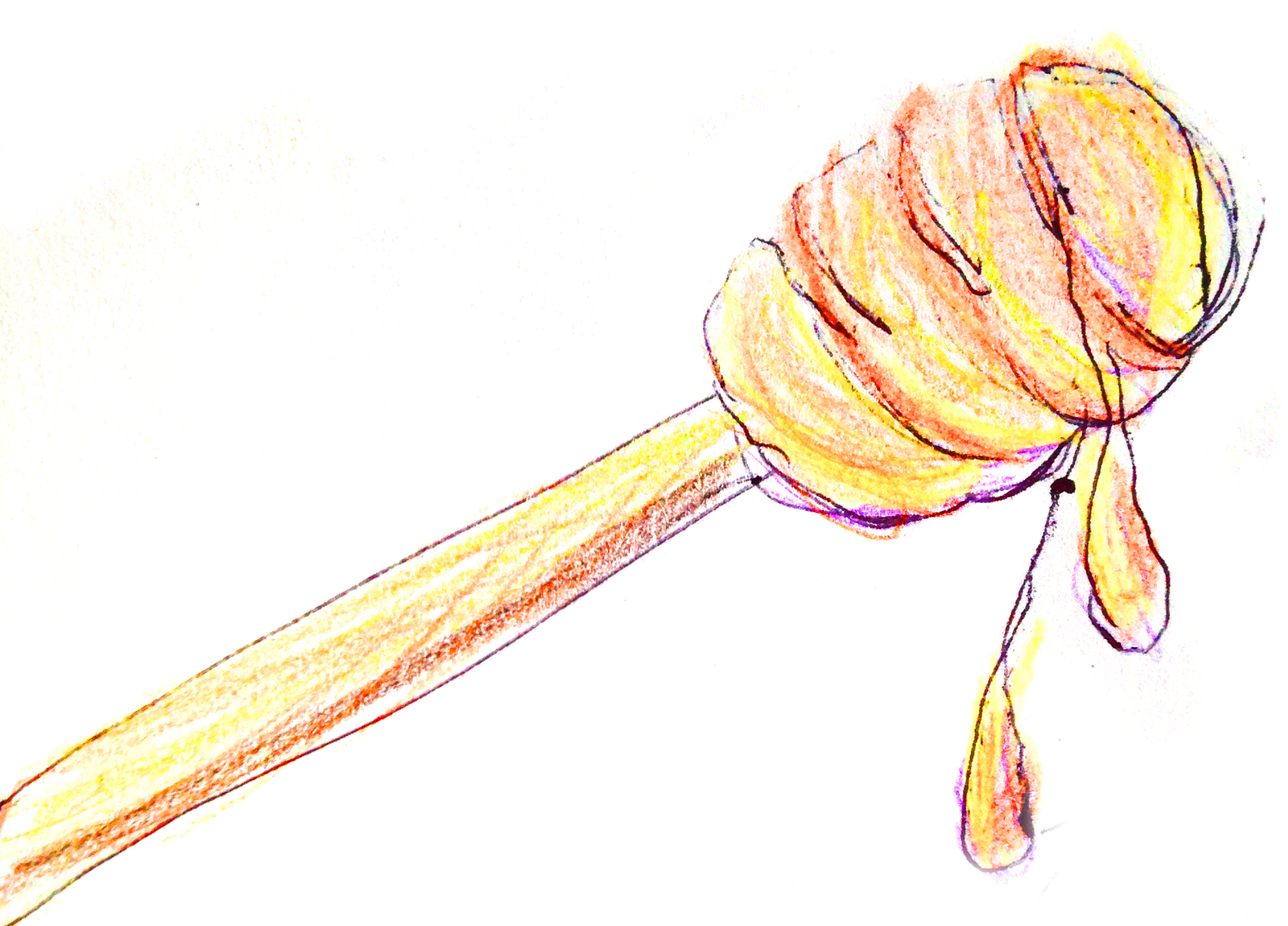
Honey’s sweetness symbolises our hope to have a sweet new year. Usually we have honey with apples.
(Honey illustration by Natalie and Gil Dekel.)
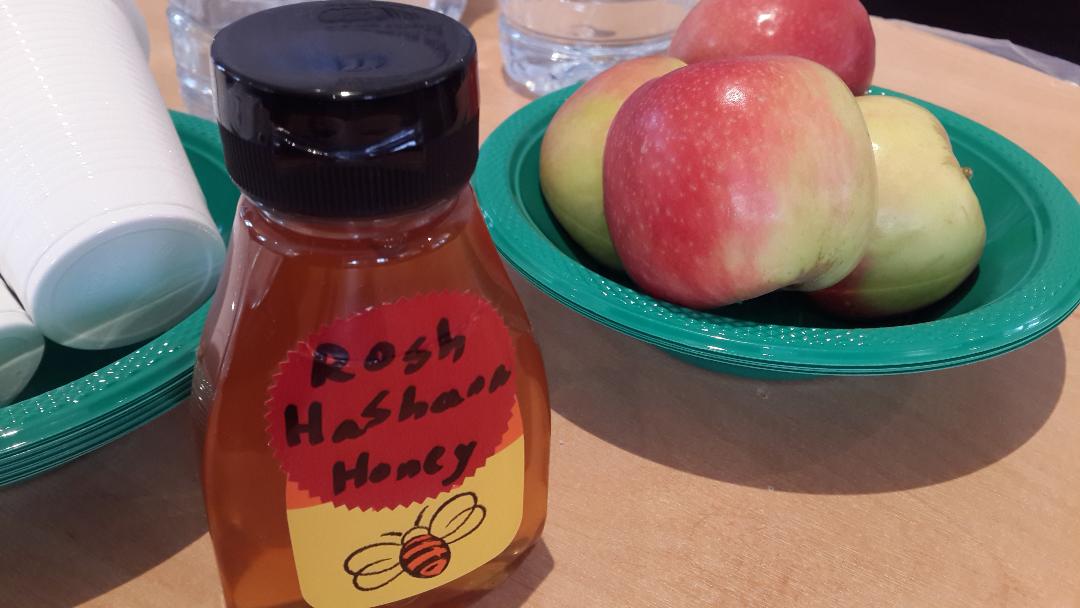
Honey and Apples. (Photo by Gil Dekel)
Rosh HaShana: The Birthday of the Soul
Rosh HaShana, the Jewish New Year, is the birthday of the soul and a time for renewal, reflection, and change.
Rosh HaShana is celebrated on the Jewish month of TishRei, the first and the second day of the month of TishRei.
It is the new Jewish year. On this day, Adam and Eve were created, but not their physical creation, but rather their soul. Their soul was created, and it was combined and attached to their physicality. It’s not about the materiality. It’s about the birthday of the soul. Humanity does not begin with biology. Humanity does not begin with physics. It begins with the soul. The human soul, Adam and Eve’s soul, has formed, and has created the whole world. So it is the birthday of your soul as well…
(Art activity: Since it’s the birthday of your soul, give children an envelope to write a wish or draw the gift that they will give to their soul on its birthday).
The soul brings about consciousness. The soul is very special because it puts a purpose in a human being. It puts meaning into your life. It gives you free choice; gives you free will to choose what you want, and it makes life meaningful.
Adam and Eve, on that day, moved from being creatures that only received light from God to beings who could also give light to the world. They now had purpose and meaning. Rosh HaShana is about creating new consciousness, for on this day new awareness entered the universe.
The world already existed — rivers were flowing, trees were swaying, and mountains stood tall. Yet it was scenery without a story. When God gave a soul to Adam and Eve, they opened their spiritual eyes and looked at the world anew. They saw not just sky or trees but the glory of the Creator. They understood that everything reflected the kindness, beauty, and majesty of God. Because of the soul, creation now had meaning, purpose, and a story.
This is why Rosh HaShana is called the first day of creation. It does not mark the physical universe’s beginning but the beginning of meaning. For the first time, someone (Adam and Eve) looked at the world and said: “This matters. This is important. This story has a purpose.”
On Rosh HaShana we greet each other with “Shana Tova”, wishing one another a good year. We dip apple in honey to symbolise our hope for a sweet year, and eat pomegranate, which looks like a crown, and has many seeds, reminding us of the many (613) mitzvot — the commandments in the Torah.
Rosh HaShana is also the time when we renew our bond with God. It is a two-way relationship, as tradition teaches that God consults humanity about whether to renew the world or not. The world becomes like a single dot of potential, awaiting renewal.
(Art activity: Invite children to design their own “robe” for the new journey ahead — a way to imagine what they want to become in the coming year.)
Rosh HaShana is also known as the Day of Judgment. It is not only the day when we ask God to renew the world, but also when God looks upon us. God opens the Book of Life, writing both the good and bad deeds of each person. Yet the festival reminds us that change is always possible — we can let go of past mistakes and choose to become new people.
On this day, God is compared to a king walking in his garden before entering his palace. While in the garden, he is more approachable, inviting us to draw near and speak with him. It is a chance for anyone, regardless of past experience, to meet God, to talk, and to ask for the strength to become better.
(Art activity: Create a scroll contract where children write or draw what they want to be and do in the coming year.)
Rosh HaShana teaches that when we transform who we are, we also transform the meaning of our past. Choosing to grow and move forward can change the path that once seemed fixed. What once led only to one outcome now leads to another (as we choose to change), as if the past itself has shifted. This is the unique power of Rosh HaShana: the chance to renew not only the future, but the meaning of everything that came before. Rosh HaShana is therefore the new coming year, yet also it is a renewal of past years.
The Hebrew name itself carries this message. Shana means “year” but shares its root with shinui, meaning “change”. Rosh means “head” — not just beginning, but the part that directs the whole body. Thus, Rosh HaShana is not only the head of the year, but the head of change.
In order to change, we follow the ritual of Tashlich, “casting away”. We go to a river or the sea and symbolically throw away our sins, letting the water carry them away. This act clears the way for renewal. Nature, ever resourceful, transforms the past into something new.
On Rosh HaShana, God’s protection over the world is renewed. By crowning God as king, we accept this renewal, affirming our connection to divine guidance. The Hebrew word melech (king) is linked to molech, meaning to guide. Thus, God is not crowned as a ruler who dictates, but as a guide who leads us forward.
Because we crown God, we blow the shofar, the ram’s horn trumpet. Its blast proclaims God’s kingship. To blow the shofar, we need to first breathe in. Breathing into the shofar recalls how God breathed the soul into Adam and Eve. To sound the shofar, one must inhale and exhale — a reminder first to improve oneself (inhale) and only then to bring goodness into the world (exhale).
The shofar’s voice is a raw sound without words. Sound exists before words exist. This reminds us of the soul’s existence before the body, just as sound comes before speech. It is called the “primordial sound” — a wake-up call for the soul, stirring it from slumber. At Mount Sinai, the Torah tells us, the sound of the shofar was so powerful that the people’s souls could not contain it, and angels were sent to restore them.
(Art activity: Invite children to imagine they are at Mount Sinai, and to show with their body posture how they would feel hearing the great sound of the shofar.)
The shofar is sounded in three ways on Rosh HaShana. Tekiah is one long, steady blast. Shevarim is three broken notes. Teruah is nine short, urgent sounds.
Tekiah calls for attention, like a great alarm announcing God’s kingship. It also represents the single, united soul yearning to return to God. In Hebrew, tekiah also mean “to drive into the ground,” like breaking open the earth so that something new can grow. It is the sound of beginnings, of opening the year.
Shevarim means “breaks” or “fragments”. The three blasts are like sobs, echoing the brokenness of the world, our cry for the destroyed Temple, and our trembling awe before God’s judgment.
Teruah is a rapid series of nine blasts, a call to urgency and action. It represents scattered sparks of holiness throughout the world, which we are tasked to gather back into unity — returning all pieces into tekiah, into oneness with God.
The shofar is usually made from a ram’s horn, recalling Abraham’s offering of a ram in place of his son Itzhak. The horn is bent, curved shape, symbolising humility, reminding us to bow before God’s greatness and to make ourselves open to receive the new.
Rosh HaShana is also rich with symbolic foods. Dates (tamar) recall the word tam, “to cease”, and are eaten with the prayer that evil and misfortune will end. Pomegranates, crowned shape, and filled with seeds, symbolise abundance and the 613 commandments of the Torah, and are eaten with the hope of being filled with good deeds. Green beans (rubia) echo the word yirbu, “to multiply”, and are eaten as a prayer for blessings to increase. Carrots (gezer) sound like ligzor, “to decree”, and are eaten as a prayer for favourable judgment. Apples dipped in honey symbolise our wish for a sweet new year.
With these prayers, blessings, and rituals, the new year begins. Rosh HaShana is the Jewish new year — not simply a commemoration of the world’s creation, but the celebration of the soul, meaning, and the possibility of change. It is a day to look forward, to cast away the past, and to choose who we want to become. The shofar reminds us that the world itself is renewed only if we accept and crown God as king — a guide — and commit to bringing scattered sparks back into unity.
© Gil Dekel.
25 Sep 2013. Last updated 28 Sep 2025.



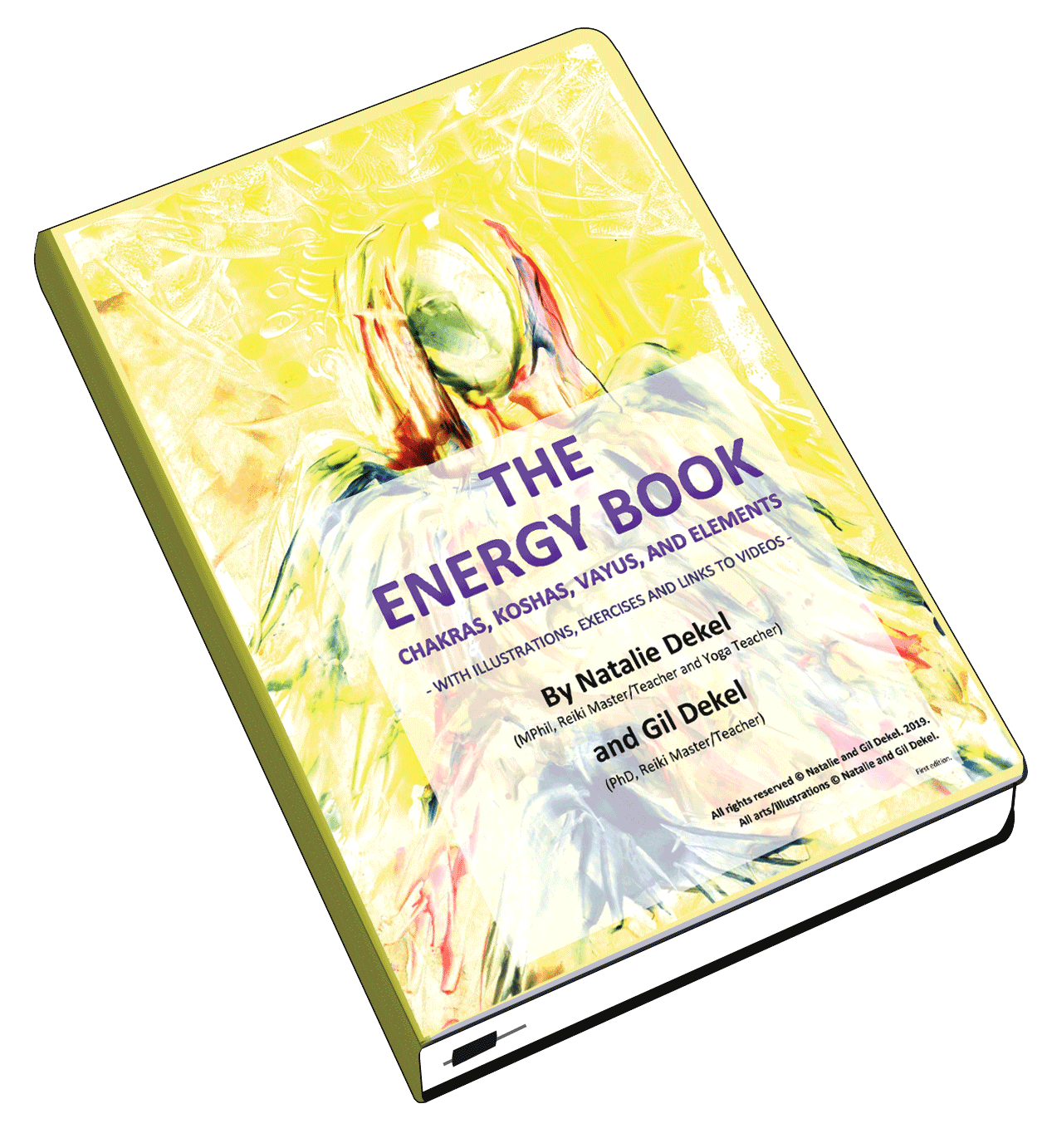
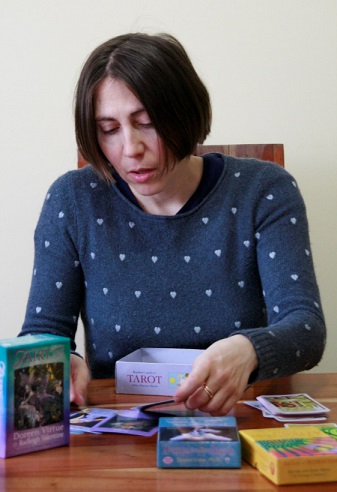 - Reading with Natalie, book here...
- Reading with Natalie, book here...